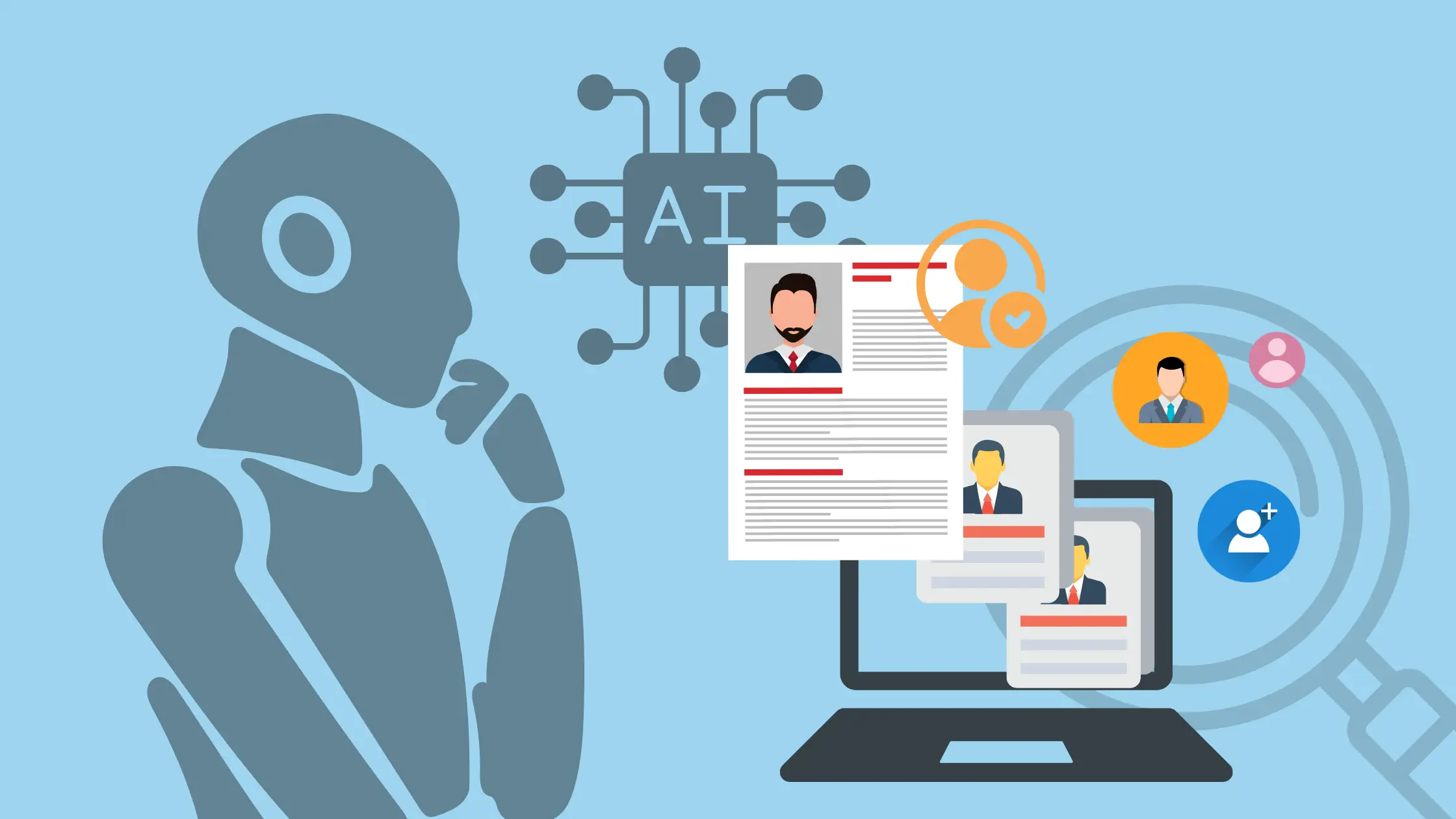How AI Is Transforming Modern Hiring: A Practical Guide for Businesses to Improve Recruitment Efficiency

Businesses today compete not just for customers, but for talent. The hiring landscape has shifted dramatically over the past few years: remote work opened global talent pools, applicant volumes surged, and candidate expectations evolved. Traditional hiring processes—manual resume screening, generic outreach, and slow feedback cycles—struggle under the weight of modern demands. The result is costly: longer time-to-hire, higher talent drop-off, and mis-hires that impact productivity and culture.
The main takeaway: businesses that adopt AI-driven recruitment workflows can reduce time-to-hire, improve candidate quality, and cut costs—without sacrificing the human touch. The key is to use AI for scalable tasks like resume screening, keyword matching, and format validation while keeping strategic decisions and candidate experience human-centered.
Below is a practical, end-to-end guide for business leaders, HR teams, and hiring managers to modernize recruiting with AI—complete with actionable steps, metrics, and tools.
Why Traditional Hiring Breaks at Scale
Manual screening is the bottleneck. A single job post can receive hundreds of resumes. Recruiters often spend minutes per resume, leading to context switching, bias, and fatigue. Formatting inconsistencies, keyword mismatches, and missing information cause strong candidates to be overlooked.
Operational drag shows up in three places:
- Screening inefficiency: Time wasted scanning resumes that don’t match basic role requirements.
- Communication delays: Unclear timelines, late feedback, and inconsistent follow-up reduce acceptance rates.
- Data silos: Job descriptions, assessments, and interview notes live in different tools without a unified view.
AI fixes these issues by improving the quality and speed of early-stage filtering, enforcing standardized evaluation, and highlighting gaps between the job description and candidate profile.
What “AI Recruiting” Actually Means (Without the Buzzwords)
AI in hiring is most useful for:
- Keyword and competency matching: Detects domain-specific skills (e.g., TypeScript, AWS, DevOps, CRM) and synonyms.
- Formatting and ATS compliance: Identifies resume structures that block parsing, such as tables, images, or multi-column layouts.
- Gap analysis: Compares resumes against job descriptions and reveals missing core requirements.
- Prioritization: Ranks candidates by match score to focus interviews on top profiles.
- Personalization: Generates tailored feedback to candidates, improving experience and employer brand.
A practical way to incorporate these benefits without overhauling your entire stack is to introduce AI screening between the application step and the recruiter review.
A Lightweight AI Recruiting Workflow for Small and Mid-Sized Businesses
Step 1: Standardize job descriptions
Write clear, role-specific job descriptions using must-have vs. nice-to-have criteria. Include hard skills, soft skills, tools, certifications, seniority expectations, and measurable outcomes (e.g., “Reduce cloud costs by 20% over 6 months”).
Step 2: Use an AI ATS checker for resume screening
Adopt an AI-powered resume screening tool that:
- Parses resumes consistently
- Highlights formatting blockers
- Compares resumes with your job description
- Provides a job match score and gap analysis
A practical, free option that does this without friction is AI ATS Checker, which analyzes resumes for keyword matching, ATS formatting issues, and job compatibility. It supports PDF and DOC/DOCX, provides a detailed AI report, and requires no signup, making it easy for teams to adopt quickly.
Step 3: Build a triage system
Define thresholds for match scores. For example:
- Strong Fit: 80–100 — fast-track to technical or team interviews
- Potential Fit: 60–79 — request clarification or a short skills task
- Not a Fit: <60 — send a polite rejection with actionable tips
Step 4: Collect structured signals early
Use short screening tasks aligned with real work (e.g., a GitHub issue, a UX critique, a 30-minute data challenge). Keep this phase lightweight—10–30 minutes maximum—to respect candidates’ time.
Step 5: Train interviewers on structured evaluation
Provide scoring rubrics and question banks aligned to the job profile. Measure interviewer calibration to reduce bias and improve consistency.
Step 6: Close the loop
Send candidates personalized improvement suggestions derived from the AI analysis. Transparent, constructive feedback enhances employer brand and encourages reapplications for better-fit roles.
Measuring Impact: The Metrics That Matter
Focus on a handful of meaningful KPIs:
- Time-to-screen: Reduce the average time from application to first decision.
- Interview-to-offer ratio: Improve by filtering earlier and aligning assessments.
- Offer acceptance rate: Higher with faster communication and clearer expectations.
- Quality of hire: Measure 90-day productivity, retention, and manager satisfaction.
- Candidate satisfaction: Use short post-process surveys to track experience.
A realistic benchmark for an AI-assisted pipeline:
- 50–70% reduction in manual screening time
- 10–20% improvement in interview-to-offer ratio
- Noticeable increase in candidate satisfaction due to clarity and speed
How AI Improves Candidate Experience (And Your Employer Brand)
Candidates judge organizations by their process. Slow, opaque pipelines push top performers away. AI improves experience by:
- Providing faster decisions and next steps
- Delivering personalized, actionable feedback based on resume analysis
- Ensuring fairer, more consistent evaluation criteria
Consider offering instant feedback on resume fitness relative to your job description. When a candidate understands the gaps, they can adjust and reapply with better alignment.
Practical Resume Guidance You Can Share with Candidates
Equip applicants with clear, ATS-friendly guidelines:
- Use a single-column layout with consistent headings (Experience, Skills, Education)
- Avoid images, tables, text boxes, and overly stylized templates
- Include a dedicated “Skills” section with tools and technologies formatted as plain text
- Mirror key phrases from the job description where accurate
- Quantify outcomes (e.g., “Reduced deployment time by 40% using CI/CD on AWS”)
- Keep file formats to PDF or DOCX and under 10MB
Providing these pointers upfront reduces parsing issues and increases match accuracy, saving time on both sides.
Case Example: Scaling Hiring for a Growing Tech Team
A mid-sized SaaS company hiring multiple frontend and DevOps roles faced screening overload and inconsistent reviews. By introducing an AI screening step:
- Resumes were parsed and scored in under 30 seconds each
- Recruiters focused on top 25% of applicants
- Candidates received quick, actionable feedback and reapplication paths
- Time-to-interview decreased from 12 days to 5 days
- Manager satisfaction increased due to stronger shortlists
The critical shift was moving manual effort from screening to interviewing and decision-making.
Building a Fair and Compliant AI Hiring Practice
AI augments human decision-making; it should not replace it. Maintain fairness and compliance by:
- Keeping humans in the loop for final decisions
- Documenting criteria used for screening and evaluation
- Periodically auditing outcomes for bias and disparate impact
- Allowing candidates to request reconsideration or submit clarifications
- Ensuring the AI tool focuses on job-relevant signals (skills, experience, outcomes)
Transparency builds trust—internally with stakeholders and externally with candidates.
Budgeting and ROI: What to Expect
Even minor gains compound as hiring volume grows. Consider the economics:
- Recruiter time saved through instant screening
- Fewer interview hours spent on low-fit candidates
- Better quality of hire reduces ramp time and early attrition
- Improved candidate experience strengthens inbound pipeline and referrals
Teams often see returns within the first hiring cycle once AI screening becomes standard.
A Minimal Stack to Get Started
To modernize recruiting without a complex overhaul, combine:
- A clear job description template
- An AI resume screening tool for ATS compliance, keyword matching, and gap detection
- A short, job-relevant skills task
- A structured interview rubric with scoring guidelines
- A simple feedback template for rejections and next steps
The goal is not tool bloat—it’s clarity, speed, and consistency.
Action Plan for the Next 30 Days
Week 1: Audit the current process
Map the pipeline from job post to offer. Identify bottlenecks and drop-off points. Collect baseline metrics: time-to-screen, interview-to-offer, and candidate satisfaction.
Week 2: Standardize inputs
Rewrite job descriptions with must-have and nice-to-have criteria. Create scoring rubrics for each role. Draft a 15–30 minute skills task per role.
Week 3: Introduce AI screening
Adopt an AI-based ATS checker for resume parsing, keyword matching, and formatting validation. Set score thresholds and triage rules. Establish SLAs for candidate communication.
Week 4: Review and refine
Compare new metrics against baseline. Interview hiring managers for quality feedback. Adjust thresholds, rubrics, and tasks. Share candidate experience wins with leadership.
Common Pitfalls (And How to Avoid Them)
Over-reliance on keywords
Mitigation: Evaluate outcomes, projects, and portfolio links. Use human review for borderline cases.
Ignoring formatting best practices
Mitigation: Provide candidates with ATS-friendly guidance and flag blockers with automated checks.
One-size-fits-all assessments
Mitigation: Tailor assessments by role and seniority. Keep them short and relevant.
No feedback loop
Mitigation: Provide brief, helpful feedback and encourage improved reapplications.



